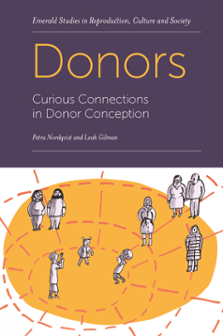
Mapping the Law and Policy Context
Citation
Nordqvist, P. and Gilman, L. (2022), "Mapping the Law and Policy Context", Donors (Emerald Studies in Reproduction, Culture and Society), Emerald Publishing Limited, Leeds, pp. 247-248. https://doi.org/10.1108/978-1-80043-564-320221014
Publisher
:Emerald Publishing Limited
Copyright © 2022 Petra Nordqvist and Leah Gilman. Published under exclusive licence by Emerald Publishing Limited
Our interview study was informed by a policy-mapping exercise. We conducted an analysis of the regulatory context in which post-2005 UK donors donate, an attempt to map out the laws and policies which frame what it means to donate in an ‘open’ context. Findings from our policy analysis are detailed in Chapter 1 and inform our analysis throughout the book.
Between January and May 2017, we identified 61 policy documents in which the rights, roles and obligations of donors, or donors' families, were either directly discussed or implicated (summarised in Table 2.1). 1 These included legal documents, public consultations, transcripts of parliamentary debates, professional guidance to infertility counsellors and a range of documents published by the HFEA. The documents were identified and selected via prior knowledge of the regulatory context, consultation of socio-legal academic studies in this area, browsing the HFEA website, discussion with HFEA staff and through contacts with British Infertility Counselling Association (BICA) members.
Documents Analysed by Category.
| Category | Document | Publisher | Date |
|---|---|---|---|
| Legal documents |
|
HMSO*
HMSO HMSO |
1990 2004 2008 |
| Policy development |
|
HFEA Department of Health Hansard Hansard HFEA |
2009–2016 2006 2004 2008 2005 |
| HFEA forms |
|
HFEA HFEA |
2016 1991–2015 |
| Codes of Practice |
|
HFEA HFEA BICA BICA |
1991–2016 1991–2017 2012 2003 |
| Information leaflets |
|
HFEA and Life cycle | 2016 |
Her Majesty's Stationary Office.
The documents were read and coded with the support of NVivo software. The first stage of coding was descriptive, identifying which aspects of policies were relevant to donors and categorising how exactly they were implicated. For example, different codes were used to categorise where and how policies discussed the donor's role in relation to various aspects of the process (e.g. payment, testing of gametes, selection of donors). The researchers read the data, looking for patterns and anomalies in the ways that laws and policies positioned donors. HFEA working papers and parliamentary debates were then read and coded in an attempt to explain patterns identified and to trace the logic and discourses behind the final policy decisions made.
Policy documents published since this period have not been included in our policy analysis. However, the commercial and technological context is changing rapidly, and there have been calls for legal and regulatory review in relation to new developments. These include the rise in direct-to-consumer genetic testing, which enabled contact between ‘donor relatives’ (Darroch and Smith, 2021), expanded genetic carrier testing for donors and improvements in egg vitrification techniques which make ‘egg banks’ and the import and export of eggs more viable (Hudson et al., 2020).
- Prelims
- Introduction
- 1 Donation in UK Law and Policy: Sociological Critique and Perspectives
- 2 Pathways to Donation
- 3 Making Parents and Making People: The Ambivalent Role of ‘Good’ Donors
- 4 The Morality of Neutrality: The Promise and Problems of ‘Letting Others Lead’
- 5 A Sense of Affinity: The Donor-Recipient Connection
- 6 Whose Story Is It? Donors, Their Families and the Relational Impact of Donating
- Conclusion: Being an Egg or Sperm Donor in an Age of Openness
- Insights for Law and Policy: Implications of Doing ‘Openness’ Differently
- Appendix 1 Interview Study With Donors, Donors' Relatives and Fertility Counsellors
- Appendix 2 Mapping the Law and Policy Context
- Bibliography
- Index